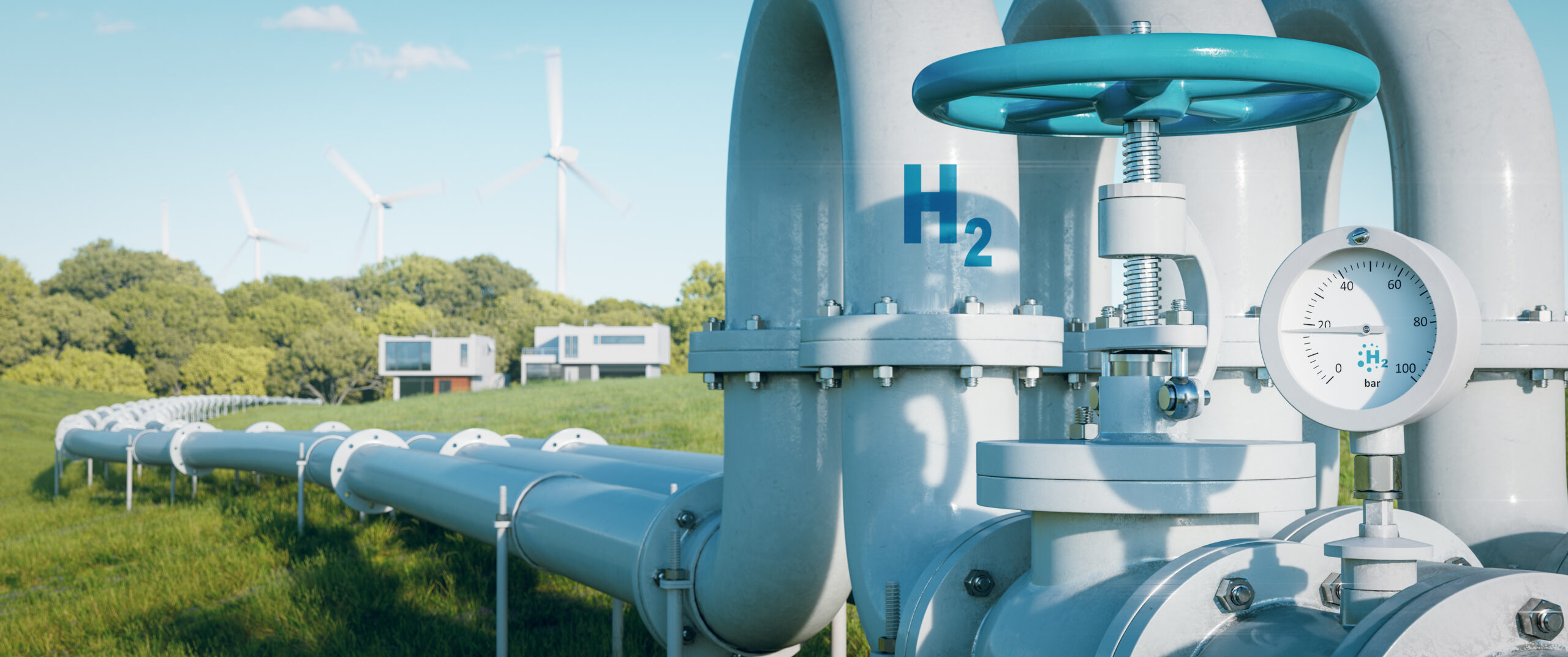Newly Effective 45V Tax Credit Helps Advance Clean Hydrogen Projects
The 45V Tax Credit, formally known as the “Credit for Production of Clean Hydrogen and Energy Credit,” became effective on January 10, 2025 when it was published in the Federal Register. The 45V Tax Credit is one of the 21 tax credits that were created or amended by the Inflation Reduction Act (IRA). Finalization of this tax credit is important news to hydrogen project developers and financiers.
As summarized below, the 45V tax credit establishes a tax credit for hydrogen production based on three tiers of carbon intensity with a five-fold multiplier if the production facility meets prevailing wage and apprenticeship requirements.
Related Services
Tax Provision
Credit for Production of Clean Hydrogen and Energy Credit
26 U.S. Code 45V
Description
Provides a tax credit for the production of clean hydrogen at a qualified clean hydrogen production facility.
Definition of a Clean Hydrogen Facility
- A “clean hydrogen production facility” produces “qualified clean hydrogen” and placed in service after 12/31/2022. Construction must begin before 1/1/2033.
- A single production facility with processes that function interdependently to produce “qualified clean hydrogen.” The process results in a lifecycle greenhouse gas emission rate used to determine the credit.
- “Qualified clean hydrogen” means hydrogen that is produced through a process that results in a lifecycle greenhouse gas emissions rate of not greater than four kilograms of CO2e/kilogram of hydrogen (kg CO2e/kg H2).
- Owned by the taxpayer and based in the United States.
Credit Accounts
Base: $0.60/kg adjusted for inflation and multiplied by an applicable percentage based on lifecycle analysis (LCA) tiers.
Bonus: Five times the base amounts if the facility meets prevailing wage and apprenticeship requirements.
LCA Tiers with Bonus:
$3.00 (100% of full credit) LCA: <0.45 kg CO2e/kg H2
$1.00 (33.4% of full credit) LCA: 0.45 – 1.5 kg CO2e/kg H2
$0.75 (25% of full credit) LCA: 1.5 – 2.5 kg CO2e/kg H2
$0.60 (20% of full credit) LCA: 2.5 – 4 kg CO2e/kg H2
Crediting Period: 10 years from the date of construction with annual LCA demonstration.
How is the 45V Tax Credit Related to Other Tax Credit Provisions of the IRA?
The IRA includes additional tax credits of potential interest to hydrogen project developers and financiers. For example, 45Q establishes a credit for carbon dioxide sequestration and 48E establishes a clean electricity investment credit. Generally, combining – or “stacking” – tax credits is not allowed; however, determination of tax credit eligibility is project specific and highly nuanced. For example, 45V and 45Q cannot be stacked, but clean hydrogen facilities that rely on carbon sequestration to meet their LCA tier may be able switch from 45V to 45Q at the end of their 10-year 45V eligibility period. Additionally, a clean hydrogen production facility taking the 45V tax credit may qualify for a 48E tax credit for hydrogen storage equipment and facilities.
What Hydrogen Production Technologies Qualify for the 45V Tax Credit?
The 45V Tax Credit, as envisioned by the IRA, was intended to be production technology agnostic relying on the LCA to select the “best” technologies; however, as initially proposed, 45V included provisions that eliminated nuclear energy for hydrogen production and included limitations for hydrogen producers who were using natural gas for hydrogen production. Important highlights from the final rule include:
Electrolytic Hydrogen: 45V as proposed required that electricity used to produce hydrogen be supplied by incremental/additional (new), deliverable (local) and temporally (time) matched sources. While these requirements remain in place, there are new provisions for incrementality. Incrementality requirements can now be satisfied by using electricity (1) produced by a generation facility that incorporates carbon capture and sequestration (“CCS”) technology placed in service within 36 months of the hydrogen production facility being placed in service, (2) produced from qualifying nuclear power plants, or (3) produced in existing generating facilities located in qualifying States (currently California and Washington).
Hydrogen from Methane: 45V as proposed required the use of a single national average for methane emissions from natural gas delivery systems in the 45VH2-GREET model. This requirement failed to recognize the investments in methane emission reductions that progressive upstream producers and pipeline operators had implemented. As a result, lifecycle greenhouse gas emissions for these hydrogen production systems were biased high resulting in suboptimal LCA values for hydrogen projects that used natural gas as a feedstock.
The final regulations indicate that future releases of 45VH2-GREET will incorporate project-specific upstream methane leakage rates, conditional on the availability of appropriate and verified data from the EPA Greenhouse Gas Reporting Program (GHGRP). This revised approach will benefit hydrogen producers who procure natural gas feedstock from suppliers who have actively invested in methane emission reduction strategies.
Notably, the proposed regulation only considered a pathway for renewable natural gas (RNG) derived from landfill gas. The final regulations now incorporate provisions for methane feedstocks derived from RNG produced from a variety of sources including animal waste, wastewater treatment, and coal mine methane.
Will 45V Regulations Change?
It is possible that the final 45V regulations may be overturned by Congress through the Congressional Review Act (CRA). Under the CRA, Congress can repeal a final agency rulemaking with a simple majority vote in both chambers and the President’s signature. Congress can only use the CRA to repeal regulations within 60 legislative days of agency finalization of the regulations. With an effective date of January 10, 2025, final 45V regulations fall within this window. Additionally, related regulations such as 48E and Subpart W rules may also be affected by the Congressional Review Act and any changes in them may affect 45V.
Next Steps
While we now have a final version of 45V, the current political environment does not allow us to interpret and implement it with the certainty that hydrogen project developers and financiers have hoped for. TRC recommends that project developers and their support teams review 45V in light of their specific hydrogen projects and then contact their elected officials to communicate their position on 45V. If the Treasury Department opens the rule for public comment, those comments could be helpful in determining whether 45V stands as written or is revised.
Legal Disclaimer
This communication is not intended to provide legal, tax or financial/investment advice but instead provide hydrogen project developers and financiers general information about provisions of the IRA that may affect their organizations in both the near- and long-term. Project developers and financiers can use this information but should also seek the counsel and the support of qualified legal, tax and investment/finance professionals to help their organizations navigate the complex and challenging incentives that will shape the future of their projects.



